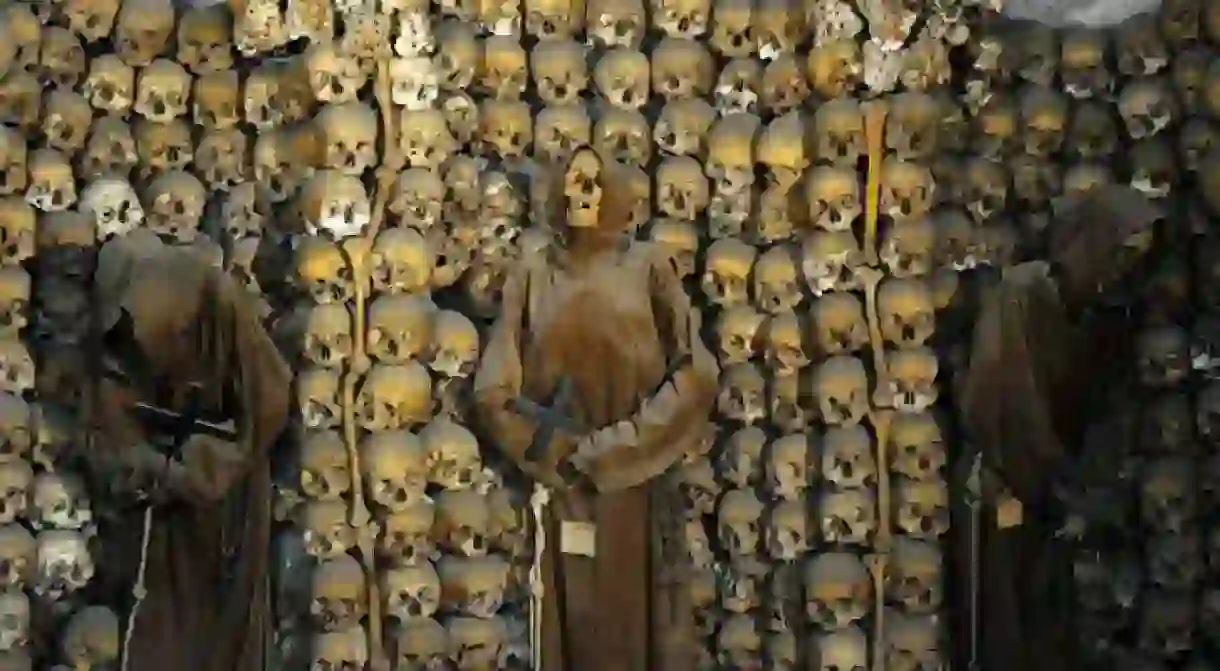These Are The Spookiest Places In Rome

As Halloween draws near, The Culture Trip takes a closer look at the spookiest places around the world to set the tone for the ghoulish holiday. Celebrate this day that remembers the dead and faithfully departed with a visit to the spookiest places in Rome.
Capuchin Crypt
The Museum and Crypt of the Capuchins is one of the eeriest sights in Rome. Comprised of a variety of chambers that house the bones of over 4,000 Capuchin monks that have been rethought into creative decorations: chandeliers are made up of arms and leg bones, skulls make up ornamental features. The bones are believed to have belonged to friars that lived between 1528 and 1870. The Order of Capuchin Friars is an offshoot of the Franciscans and value a primitive and solitary way of life. Certainly one of the oddities of Rome, this crypt is not meant to be a macabre sight but rather a testament to the transience of life. Fun fact: the name of popular coffee beverage “cappuccino” actually derives its name from the friars: the color of the espresso mixed with milk recalled the color of the Capuchin monks’ cloaks.

Museum of Criminology
This little known museum in Rome, opened in 1930, is operated by Italy’s federal Prison Administration. Although it showcases a number of incarceration and torture artifacts that can be difficult to stomach for some visitors, its goal is not to offer merely shock appeal but rather to shed light into the criminal justice system. In addition to illustrating ghastly punitive measures, the museum has a vast archive of photographs and documents that can be used as teaching tools for schools and institutions.

Santo Stefano Rotondo
Who knew a place as holy as a church could depict such gruesome scenes? The ancient basilica of Santo Stefano Rotondo is the first church in Rome to be built in a circular plan, following suit with the Church of the Holy Sepulchre in Jerusalem. The frescoes that line its walls portray 34 scenes of martyrdom painted in the 16th century by Mannerist artist Niccolò Circignani and Baroque etcher Antonio Tempesta. Commissioned by Pope Gregory XIII, the frescoes illustrate a number of unsightly torture methods, include an inscription explaining the scene, name the emperor who ordered the execution and feature a verse from the Bible.

Museum of Souls in Purgatory
Located within the Neo-Gothic Chiesa del Sacro Cuore del Suffragio lying along the Tiber River, this tiny museum contains eerie objects that are said to have been singed by the hands of souls in purgatory. The notion of purgatory is one of the central facets of the Catholic faith and holds that souls who have not been adequately rependent for their sins must pay dues before being admitted into heaven. The artifacts on display, including bibles, tabletops and clothing, feature hands and fingerprints that some believe are deceased souls communicating with their living relatives to pray for them to move onwards from purgatory and into heaven.

Catacombs on the Appia Antica
A number of Christian catacombs lie along the ancient Via Appia, a route that enabled trade to flourish throughout the Roman Empire and which touts a lot of intriguing history. It was normal for early Christians to be buried enmass in underground necropoli, or catacombs, outside of the city walls in what was then the countryside of Rome. The Catacombs of San Callisto are an important landmark because they comprise the Crypt of the Popes, which contains the remains of nine popes buried between the 2nd and 4th centuries, while the Catacombs of San Sebastiano contain burial chambers that span three gallery levels and feature beautiful frescoes and stucco work.














